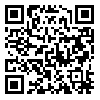دوره 16، شماره 3 - ( September 1397 )
جلد 16 شماره 3 صفحات 264-255 |
برگشت به فهرست نسخه ها
Download citation:
BibTeX | RIS | EndNote | Medlars | ProCite | Reference Manager | RefWorks
Send citation to:



BibTeX | RIS | EndNote | Medlars | ProCite | Reference Manager | RefWorks
Send citation to:
Ahadi H, Mokhlessin M. Persian Phonological Awareness Tests: A Comparative Analysis. Iranian Rehabilitation Journal 2018; 16 (3) :255-264
URL: http://irj.uswr.ac.ir/article-1-746-fa.html
URL: http://irj.uswr.ac.ir/article-1-746-fa.html
Persian Phonological Awareness Tests: A Comparative Analysis. مجله انگلیسی زبان توانبخشی. 1397; 16 (3) :255-264
چکیده: (6373 مشاهده)
Objectives: Phonological awareness is an extensive skill for detecting, manipulating, or analyzing the components of oral language, apart from their referents. The phonological awareness consists of different levels from the simplest to the most difficult level. We considered two Persian phonological awareness tests (visual and auditory) with different subtests. This research aimed to investigate the relationship between the total score, subtests scores, and their differences.
Methods: This cross-sectional study included 40 normal children of kindergartens in Tehran, Iran. Based on experimental research designs and cluster sampling method, the samples were selected from four preschool centers, in Tehran. We implemented the auditory and visual phonological awareness tests. The obtained data were analyzed by Kolmogorov–Smirnov test, the Pearson Correlation Coefficient, the Independent t test and the Paired t test in SPSS.
Results: In spite of significant differences in the total scores (P<0.05) and the scores of some tasks such as rhyme recognition (P<0.05) and final phoneme recognition (P<0.05), there was a positive correlation between the total scores (r=0.466) and the syllable segmentation tasks (r=0.339).
Discussion: Comparing the results of the two tests showed that variations in the response format and task demand can change complexity of the tasks, which could lead to different scores.
Methods: This cross-sectional study included 40 normal children of kindergartens in Tehran, Iran. Based on experimental research designs and cluster sampling method, the samples were selected from four preschool centers, in Tehran. We implemented the auditory and visual phonological awareness tests. The obtained data were analyzed by Kolmogorov–Smirnov test, the Pearson Correlation Coefficient, the Independent t test and the Paired t test in SPSS.
Results: In spite of significant differences in the total scores (P<0.05) and the scores of some tasks such as rhyme recognition (P<0.05) and final phoneme recognition (P<0.05), there was a positive correlation between the total scores (r=0.466) and the syllable segmentation tasks (r=0.339).
Discussion: Comparing the results of the two tests showed that variations in the response format and task demand can change complexity of the tasks, which could lead to different scores.
نوع مقاله: پژوهشي |
موضوع مقاله:
گفتار درمانی
دریافت: 1396/11/8 | پذیرش: 1397/3/12 | انتشار: 1397/6/10
دریافت: 1396/11/8 | پذیرش: 1397/3/12 | انتشار: 1397/6/10
فهرست منابع
1. Koda K, Zehler AM. Learning to read across languages: Cross-linguistic relationships in first- and second-language literacy development. Routledge: Taylor & Francis; 2008.
2. McGill Franzen A, Allington RL. Handbook of reading disability research. New York: Rout ledge; 2011.
3. Brunswick N. Dyslexia: A beginner's guide (Beginner's guides). London: Oneworld Publications; 2012.
4. Sedaghati, Foroughi R, Shafiei B, Maracy MR. Prevalence of dyslexia in first to fifth grade elementary students Isfahan, Iran. Bimonthly Audilogy. 2010; 19(1):94-101.
5. Everatt J. Reading and dyslexia: Visual And attentional processes. Abingdon: Routledge; 1999. [PMID]
6. Bernthal, Bankson NW, Flipsen P. Articulation and phonological disorder: Speech sound disorders in children, 7th Edition. London: Pearson; 2013.
7. Brunswick N. Dyslexia. London: Oneworld Publications; 2009.
8. Smith SB, Simmons DC, Gleason MM, Kame'enui EJ, Baker SK, Sprick K, et al. An analysis of phonological awareness instruction in four kindergarten basal reading programs. Reading & Writing Quarterly. 2001; 17(1):25-51. [DOI:10.1080/105735601455729] [DOI:10.1080/105735601455729]
9. Ryder JF, Tunmer WE, Greaney KT. Explicit instruction in phonemic awareness and phonemically based decoding skills as an intervention strategy for struggling readers in whole language classrooms. Reading and Writing. 2008; 21(4):349-69. [DOI:10.1007/s11145-007-9080-z] [DOI:10.1007/s11145-007-9080-z]
10. Yopp HK. Developing phonemic awareness in young children. The Reading Teacher. 1992; 45(9):696-703.
11. Goswami U. Phonological representations, reading development and dyslexia: Towards cross-linguistic theoretical framework. Dyslexia. 2000; 6(2):133-51. [DOI:10.1002/(SICI)1099-0909(200004/06)6:23.0.CO;2-A]
https://doi.org/10.1002/(SICI)1099-0909(200004/06)6:2<133::AID-DYS160>3.0.CO;2-A [DOI:10.1002/(SICI)1099-0909(200004/06)6:23.0.CO;2-A]
12. Yopp HK. The validity and reliability of phonemic awareness tests. Reading Research Quarterly. 1988; 23(2):159-77. [DOI:10.2307/747800]
13. Robelo E. A Comparison of three phonological awareness tools used to identify phonemic awareness deficits in kindergarten-age children [PhD Dissertation]. Florida: University of Central Florida; 2006.
14. Stanovich K, Cunningham AE. Assessing phonological awareness in kindergarten children: Issues of task comparability. Journal of Experimental Child Psychology. 1984; 38(1):175-90. [DOI:10.1016/0022-0965(84)90120-6] [DOI:10.1016/0022-0965(84)90120-6]
15. Cassano CM, Steiner L. Exploring assessment demands and task supports in early childhood phonological awareness assessments. Literacy Research: Theory, Method, and Practice. 2016; 65(1):217-35. [DOI:10.1177/2381336916661521]
16. Soleymani Z Dastjerdi Kazemi M. Validity and reliability of the phonological awareness test. Journal of Psychology. 2005; 9(1):82-100.
17. Ghorbani A, Arani Kashani Z. [Auditory test of phonological awareness skills (ASHA-5) for 5-6 years old Persian speaking children (Persian)]. Tehran: Setayesh Hasti; 2009.
18. Bialystok ES, Majumder Sh, MARTIN MM. Developing phonological awareness: Is there a bilingual advantage? Applied Psycholinguistics. 2003; 24(1):27-44. [DOI:10.1017/S014271640300002X] [DOI:10.1017/S014271640300002X]
19. Tunmer WE, Rohl M. Phonological awareness and reading acquisition. In: Tunmer WE, Rohl M, editors, Phonological Awareness in Reading. Berlin: Springer; 1991. [DOI:10.1007/978-1-4612-3010-6_1] [DOI:10.1007/978-1-4612-3010-6_1]
20. Shirazi T. [Study and comparison between rapid naming and phoneme awareness in dyslexic and normal readers (Persian)]. Archives of Rehabilitation. 2004; 5(3):49-54.





